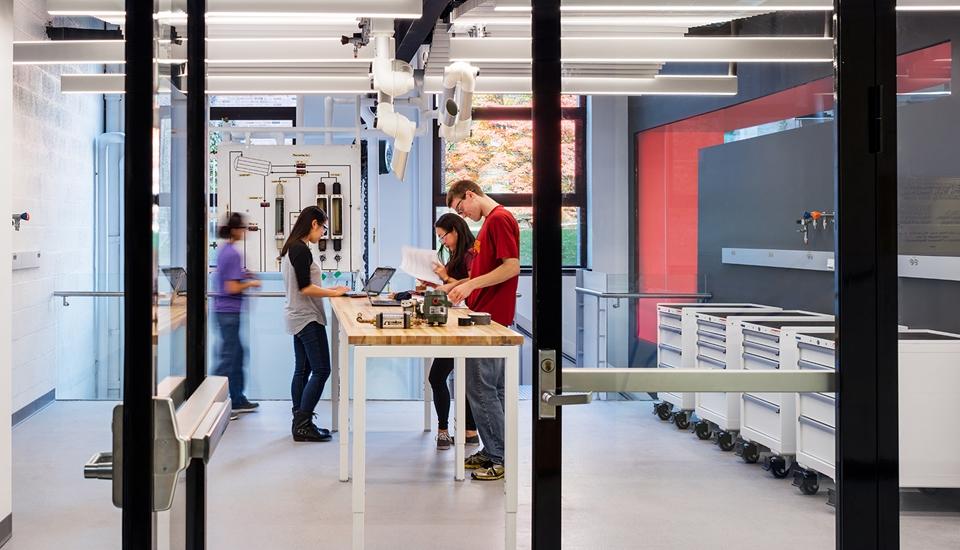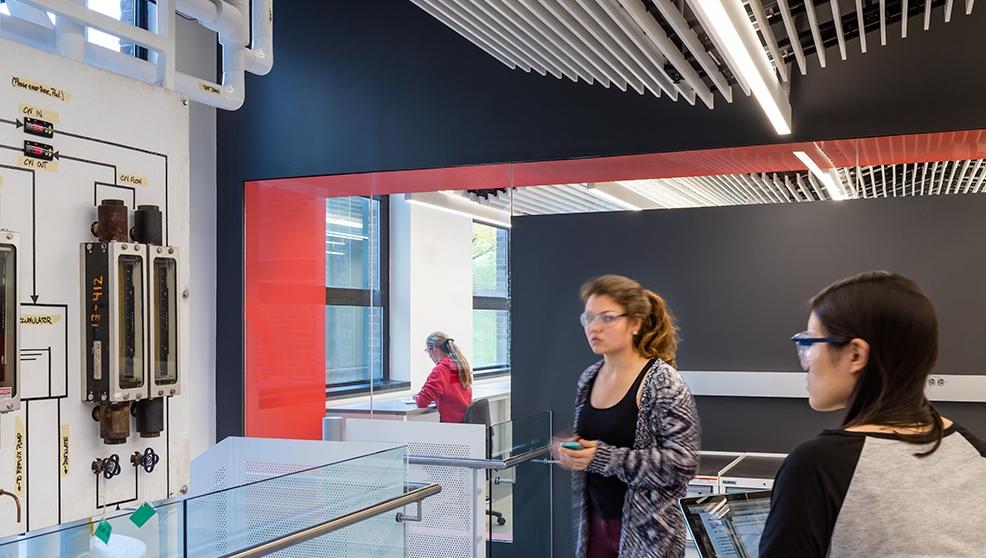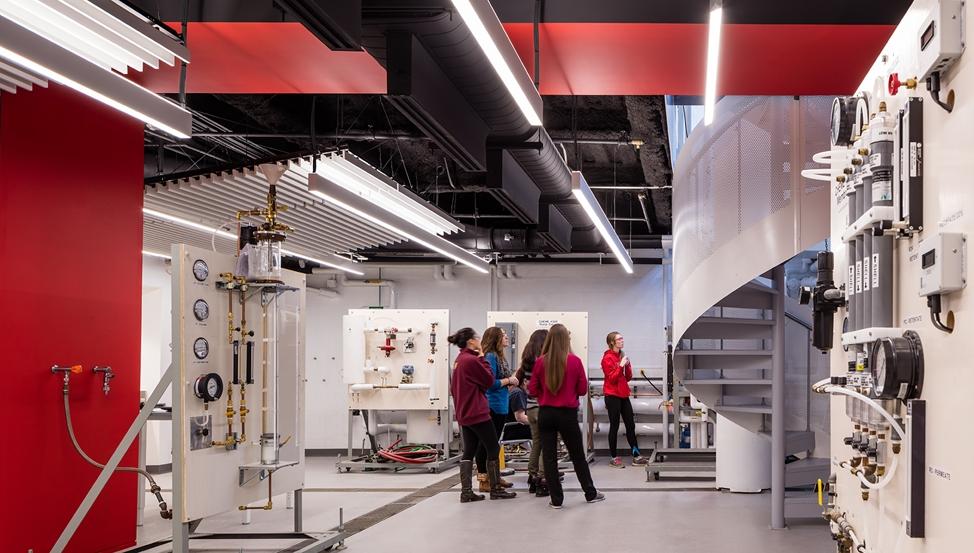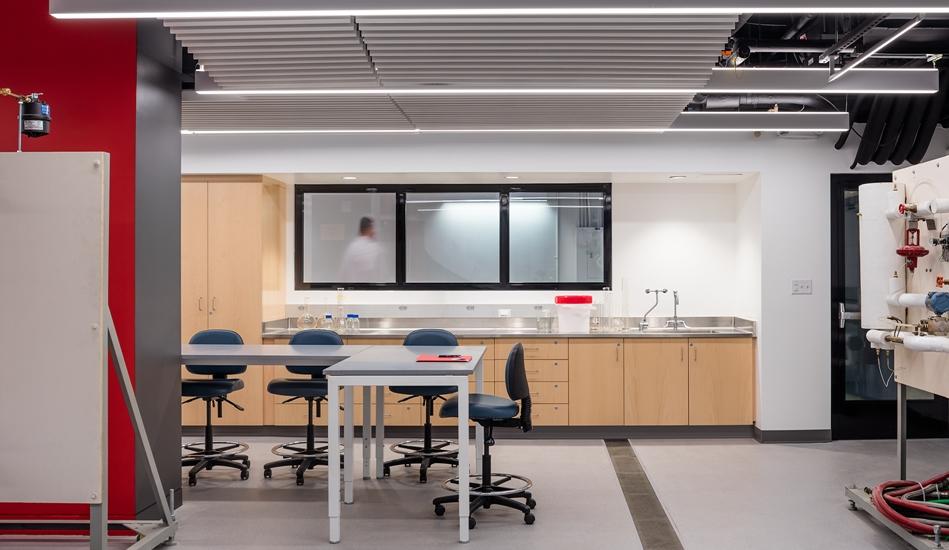Unit Operations Laboratory
The fall semester, senior-level course “ChemE 4320 – Chemical Engineering Laboratory” is the first of two capstone courses in the undergraduate curriculum. Students work in teams in ChemE 4320 to plan and conduct experiments, collect and analyze data, and write technical reports. The experiments add practical, hands-on reinforcement to the chemical engineering fundamentals taught in 3000-level courses. Some of the lab reports involve engineering design assignments that prepare students for their choice of the second capstone course in the spring semester; “ChemE 4620 – Chemical Process Design” or "ChemE 4630 - Chemical Product Design". The overarching goal of the capstone courses is to transform students from stand-alone homework-solvers, and test-takers into communicators, team-members, and open-ended problem solvers.
The Unit Operations Laboratory includes two rooms: B-11 in the basement of Olin Hall and 111 directly above on the first floor. These rooms were comprehensively renovated and modernized in 2015.
The basement room (B-11) has ~1100 sq. ft. of open floor space with utilities distributed around three walls, including low pressure steam, condensate return, domestic water, and 100 psig air. The large experiments for ChemE 4320 reside there, including several shell-and-tube heat exchangers, a gas membrane separator, a fluidized bed, a process control demonstration with a commercial Rockwell controller, several fermenters, and most importantly, an eight-tray continuous distillation apparatus that stands ~15 ft. tall, protruding through an opening in the ceiling into the lab above. This apparatus is derived from the original 15-tray still that was assembled in the original UO Lab in the late 1940s, when Olin Hall was a new building on campus.
The upstairs room (111) has ~1000 sq. ft. of floor space with a glove box, a fume hood, an overhead exhaust system, a gas distribution system, and configurable work benches. This lab is shared by our new Product Design course ChemE 4630, which uses it for hands-on projects, and the ChemE Car Team, which uses it for fabricating, testing, and improving their new designs.
Both rooms are bright and spacious, and the new layouts, utilities, and furnishings from the 2015 upgrade provide flexibility to meet current and evolving needs of our undergraduate curriculum.






